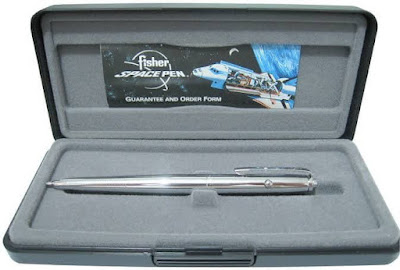What is a Space Pen: The Space pen is a concept design pioneered by
American Engineer Paul C. Fisher, he designed the space pen factoring in
gravity, atmospheric pressure, and variance in temperature.
Fisher developed the concept frustrated with leaking ballpoints for
aeronautical applications and received no funding from NASA or any other
government agency for its design, reeling from the controversy of 1965, it
was not until 1967 that NASA after rigorous testing adopted the Fishers Space
Pen for astronauts who were part of Project Apollo. 400 Pens were purchased
at a unit cost of 6$.
Fisher's space pen could write on almost any substance from butter to steel,
in any temperature ranging between -30 to 250 degrees Fahrenheit, at any
angle, and used pressurized ink cartridges with a special kind of ink called
Thixotropic ink. A type of viscous ink that only flowed under stressful
conditions perfect for aeronautical and astronomical applications.
The body was constructed with tungsten carbide and high precision fitting
ensured no leakage. It also employed a sliding float separating the ink from
the pressurized gas. Nitrogen was the gas employed in the pressure chamber
which ejected the ink at 45 psi. The design solved the problems of pressure,
temperature, and gravity and enabled it to last 3 times longer than a
regular ballpoint pen. This unique design patent was filed on 19 May 1965.
Fishers Space Pen is employed even today but the 2 models produced in the
days of early space missions were the AG7 Astronaut Pen, a retractable pen
shaped like a ballpoint pen, and a shorter version called the Bullet Pen
which had a cap.
Tags:
sponsored


really ;good
ReplyDeletegood
ReplyDelete